When day trading, set a maximum daily loss and loss-from-top limit to control how much is lost in a single day. We don’t want a single bad day to ruin our week, month, or year!
When day trading, I recommend that you not only control the risk on each trade with a stop loss, but also limit how much you can lose in a day. Set a cap for how much you are willing to lose in a single day. If you hit that mark, close your positions. You are done for the day. Make it back another day.
Some days the market is erratic, and no matter which strategy you use or how you try to adjust, the market is going to take your money. This is the reality of trading; it doesn’t have to happen often, but it will happen. Keep the loss manageable on such days.
Or maybe something personal is going on and you aren’t totally focused, or there’s no structure to the market and you lose trade after trade. On such days, keep the losses contained so you still have most of your capital intact to come back and trade another day.
Setting Your Daily Maximum Loss For Day Trading
In your trading plan, define your maximum daily day trading loss. If you hit your daily loss limit, stop trading for that day.
Here are two ways to limit how much you can lose in a day while day trading:
- Don’t lose more than a fixed percentage of your account in a single day, such as 0.5%, 1%, or 3%. Decide on an amount (when not trading) and then stick to it while trading.
- Don’t lose more than a fixed dollar amount. This dollar amount should be equal to or less than what you typically make on a profitable day.
I know many traders who stop trading if they lose their first three trades in a row. If you risk about 1% of your capital (see Position Sizing) on each trade, three losses in a row means you’ve lost 3% of your capital.
3% is the most anyone should be losing in a single day. Set your limit at 3% or lower.
If you are getting close to being stopped for the day, you can always cut your position size in half to give yourself some breathing room.
For example, you risk 1% per trade, you’ve lost two in a row and if you lose another you will be down 3% and stopped out for the day. You can always drop your risk on the next trade to 0.5% (cut position size in half). Now you have two chances to make a profitable trade, because you would need to lose the next 2 trades to hit your 3% threshold. If you have a winning trade, and you are no longer one losing trade away from your stop-out point, then you can go back to trading your full position size.
If you are new to trading and still learning, I recommend only risking 0.1% or 0.25% on each trade, or even less. Set your daily risk limit at 1% or less. Even setting the daily limit at 0.8%, while risking 0.2% per trade, means you would have to lose 4 trades in a row to be stopped out for the day.
The risk limit is imposed to make sure that no single day ruins your week or your month. I’ve seen traders lose everything because they were upset, unfocused, or just couldn’t admit they were wrong.
Don’t let this happen to you. There’s always tomorrow. If you lose your specified amount in a day, close all positions, get away from your trading screen, and go do something else.
Learn how to day trade stocks.
30 minutes per day is all you need (trade longer if you wish).
The Price Action Stock Day Trading Course shows you how to do it.
Daily Loss Limit for Day Trading…As You Improve
Once you have a track record and are profitable, set your daily maximum loss at the amount you make on your average profitable day.
Assume, on average, you make $300 in profit on your winning days. Make $300 (ish) your risk limit for the day. If you lose $300 while day trading, stop for the day.
If you typically make 3R on winning days, don’t lose more than 3R on a losing day.
By doing this, you know you can make back a bad losing day with an average winning day.
Calculate your average winning day every two weeks or one month. That is your maximum daily day trading loss for the next two weeks to a month.
The main goal is to avoid having a really big one-day loss that ruins your whole month (or life) and creates a hole that is hard to dig out of.
Day Trading Loss-From-Top Limit
Also, consider employing a maximum “day trading loss from top.”
Your loss from top threshold could be the same figure as your risk limit, except it only applies to the highest point of profit you’ve accumulated so far in the day.
For example, assume you’ve imposed a daily risk of $300 on yourself. If you lose this amount in a day you stop trading. But instead of losing, you start out the day on a tear, winning several trades in a row and you’re now up $900 (based on closed trades).
The $300 dollar loss-from-top rule still applies, except now it’s applied to the $900 (your highest profit point). If you drop down to $600 in profit, quit trading for the day.
You can set your loss from top limit at whatever you want. But if you have had a great day so far, you don’t want to give it all back.
Here’s how it works over several trades. Insert whatever dollar figure or R value you wish into the example:
At the start of the day, profit is $0 so the daily stop is -$300 (negative number, representing a loss).
After 1 Trade (winner) your profit is $100, so if you lose $300 from that point (hit -$200) you stop for the day.
After 2 Trades (loser): Profit is $50, daily stop stays at -$200 because you use the high point, $100 profit, for the loss from the top.
After 3 Trades (winner) you are now up to a $200 profit for the day, so the daily stop is -$100.
After 4 Traders (loser) your profit is back to $100. Daily stop stays at -$100.
After 5 Trades (winner) Profit is now $300, daily stop at $0.
After 6 Trades (winner) Profit is now $500, daily stop at $200.
After 7 Trades (winner) Profit is now $700 daily stop at $400.
After 8 Trades (loser) Profit is now $600, daily stop stays at $400.
After 9 Trades (loser) Profit is now $500, daily stop stays at $400.
After 10 Trades (loser) Profit is $400, daily stop is $400. STOP TRADING!
The loss from top protects you from losing your maximum (in this case -$300) when you’ve started out the day profitable.
You could also also use R values. If your daily risk/loss-from-top limit is 2R, then the day is done anytime you drop 2R from your high point (in R).
Usually hitting the loss from top means you’ve lost several trades in a row, which indicates you’re off your game or the market structure has changed and isn’t conducive to the strategies being used.
Take your profit and trade with it another day. Don’t try to be a hero and make it back. What matters in trading is your profit at the end of the month. You are going to feel a lot worse if you start out the day well and then lose everything and wind up negative. Avoid that scenario.
A profitable day is a profitable day. By following these types of rules, you are likely to have more profitable days, and the losing days are manageable.
Are Loss-From-Top and Daily Loss Limits For Everyone?
I think most people would benefit from imposing these risk limits on their trading.
The exception may be if someone notices their performance would improve without these limits.
For example, a trader might utilize a strategy with a very low win rate but a very high reward:risk.
They may have many losing trades in a row, and that is expected, but then the winner more than compensates for it. In this case, a daily stop loss or loss from top may interfere with the strategy because it could cause great harm if that one big winning trade is missed as a result of being stopped out.
These daily risk limits are good for most people, but as with all things in trading, we need to find what works for us. We need to find our own balance between risk management and profit.
We DO need to avoid digging holes that are too big to get out of, but we also want to allow our system to play out (assuming it is likely to produce a profit).
There is also a psychological element. When losing many people go on “tilt.” They are trying to make their money back, as opposed to following their process. This state of mind can lead to revenge trading, getting angry, and doing stupid things. If this is a problem for you, then definitely impose the risk limits. Stop trading before your brain goes on “tilt” because then you probably won’t be able to stop yourself from trading and will likely lose more.
As with everything, there is a flip side to this as well. When I golf, I noticed that I get hyper-focused (in a good way) after I make a mistake that pisses me off. Some boxers and MMA fighters come alive after they get punched a few times. Same thing can happen with trading. A mistake or a couple of losses can cause some of us to trade better! We enter our zone.
That said, it isn’t ideal to have to always make mistakes to get into the zone. Create this zone in your pre-trade routine; imagine getting beat up by the market and when the day starts you are fighting your way back (if that is when you trade your best). Get the benefit of this mind frame without having to take any real losses first.
Find what works best for you.
Final Word on Daily Day Trading Maximum Losses
Daily risk limits and loss from tops are useful tools for day traders. These tools stop you from doing significant damage to your account in a single day.
Define exactly how you’ll limit your risk, and how you’ll implement these rules in your trading plan. If you don’t have a trading plan get started on one ASAP!
My EURUSD Day Trading Course teaches you how to day trade the EURUSD in 2 hours or less a day, with the potential to make double-digit percentage returns each month (with practice) with patterns that tend to occur almost every day.
Controlling Day Losses FAQs
Here are some common questions related to managing daily risk while day trading.
What is the maximum daily loss for day trading?
Don’t lose more than 3% of your account in a single day. When starting out, limit losses to 1% or 0.5% per day. Once you are profitable, set your maximum daily loss at your average profitable day. If you make $500 on profitable days, or 2%, then your maximum daily loss should be about $500 or 2% of your account.
What is the 1% rule for day trading?
The 1% risk rule means you don’t lose more than 1% of your account on a single trade. You can use as much capital as you want, or even use leverage, but if you lose 1% of your capital you close the trade. Use stop losses and position sizing to make sure you don’t lose more than 1%.
Can day traders make 1% per day?
Yes, it is possible to make 1% daily or more day trading. For example, risk 1% of your account on a trade with a 2:1 reward:risk, and if you win 50% of your trades, you’ll average 1% per day in profits taking two trades per day. You make 2% on the winner and lose 1% on the loser. Very few day traders are able to do it, even though it’s simple in theory. And don’t expect to keep compounding your returns. The more capital you have the harder it is to keep making 1% per day.
By Cory Mitchell, CMT
Disclaimer: Nothing in this article is personal investment advice, or advice to buy or sell anything. Trading is risky and can result in substantial losses, even more than deposited if using leverage.



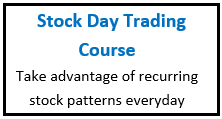
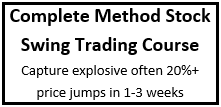
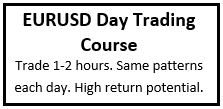
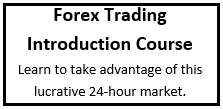
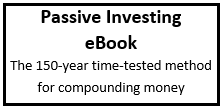
4 Comments
Leave your reply.